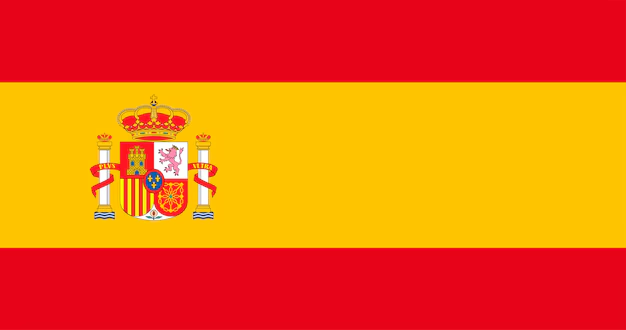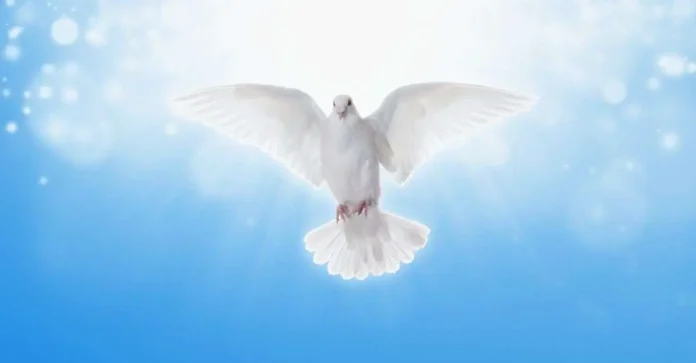The dove in the Old Testament
Baptismholy spirit: Before Jesus , the dove was seen sporadically throughout the Old Testament. Every reference to the dove in Scripture already had symbolic meaning and would ultimately be fulfilled in the broader context of Jesus’ life and ministry, beginning with his baptism and continuing through the movement of the holy spirit, who still lives nowadays.symbol for the
The dove during the flood
During the last days of the great flood which had covered the face of the earth, it is written that Noah sent a dove in search of dry land (Genesis 8:8-9). Several times the dove returned to the ark, indicating that the waters had not yet receded. Finally, in a separate flight, the dove returned to the ark with a “freshly picked olive leaf” (Genesis 8:11), then not at all after seven days (Genesis 8:12). It was then that Noah knew that the waters had disappeared from the earth and that the ark would soon stand still as if on dry land. From then on, the dove was considered a harbinger of peace and the symbol of hope and new life.
The dove in Mosaic law
The second piece of symbolism that would eventually come to fruition in the life of Jesus can be seen in the sacrificial system of the Mosaic law, where turtledoves and turtledoves were the only birds that could be offered as acceptable sacrifices due to their purity perceived. (Genesis 15:9, Leviticus 12:6, Luke 2:24)
It is also worth mentioning that turtledoves and doves were often purchased and used by those who could not afford one of the more expensive offerings, such as an unblemished lamb. Even then, God intended that everyone, regardless of wealth or status, bring their best offerings before the Lord (Leviticus 5:7).
Knowing God’s heart in this matter helps explain why Jesus was later so enraged by the money changers in the temple (Matthew 21:12-13, Mark 11:15-18, Luke 19:45-48, John 2:13-21). Before his purification of the temple, merchants and money changers had taken advantage of the poor and had gone overboard for ritual sacrifices. In doing so, it was difficult for God’s disciples to purchase sacrifices and come before the Lord (Matthew 21:12). This was something Jesus would not tolerate!
The dove as a symbol of purity
Old Testament writers also used the dove poetically as a symbol of purity, gentleness, and grace.
“How beautiful you are my darling, how beautiful you are! Your eyes are as doves « (Song of Solomon 1:15).
“When you lie down in the sheepfolds, You are like the wings of a dove covered with silver, and its pinions of shining gold” (Psalms 68:13).
“Oh, I had wings like a dove! I would fly away and rest” (Psalms 55:6).
The importance of the dove as a symbol
Taking these three examples into consideration, the Jewish people would have known and understood the symbolism of the dove from Old Testament stories and teachings. The Spirit’s descent in the form of a dove at his baptism was a public manifestation of Christ’s divinity, a confirmation of his anointing, and a link between his ministry and earlier symbols of the dove (Matthew 3:16, Mark 1:10, Luke 3:22, John 1:32).
Luke 3:22).Furthermore, in the gospel according to Matthew, Mark and Luke it is written that immediately after Jesus came out of the water and had the seed of the holy spirit, the voice of God the Father came from heaven saying: “ You are my beloved Son in you. It is a pleasure “(
Jesus would fulfill much of the symbolism of the dove in early Scripture. It was:
John 1:33-34).In the Gospel of John, John the Baptist proclaimed the coming of the Messiah. “He who sent me to baptize in water said to me, ‘Whoever you see on whom the Spirit descends and remains on him, he is the one who baptizes in the holy spirit.’ I myself have seen and testified that this is the Son of God” (
Joel 2:28-29).With the coming of the holy spirit, which had been promised and prophesied in the book of Joel, Christ’s disciples would also have access to the same spiritual covering that had descended on Jesus at his baptism and moved through him throughout. throughout his earthly ministry. As Joel wrote, “after this I will pour out my Spirit on all mankind. and your sons and daughters shall prophesy, your old men shall dream, your young men shall see visions. Even upon male and female servants I will pour out my Spirit in those days” (
Acts 2), promised by Jesus during his ascension (John 14:15-17).The holy spirit descending on Jesus was a symbolic fulfillment of the Old Testament prophecy and the preface to the Day of Pentecost, in which the holy spirit would descend on the apostles and give them the gifts of the Spirit (
Today, the dove symbolizes the holy spirit, the fulfillment of Scripture through the life and ministry of Jesus, and the peace, power, purity, and propitiation of sin that is in relationship with God .
Joel Ryan is a Los Angeles-based children’s and young adult author who teaches writing and communication in Life Pacific University. A former youth pastor, he has a heart for young adults and is passionate about youth engagement through film, literature and theater. His blog, Page Perspectivesdiscusses the creative and spiritual life through history and art.
Photo credit: Getty
Author



